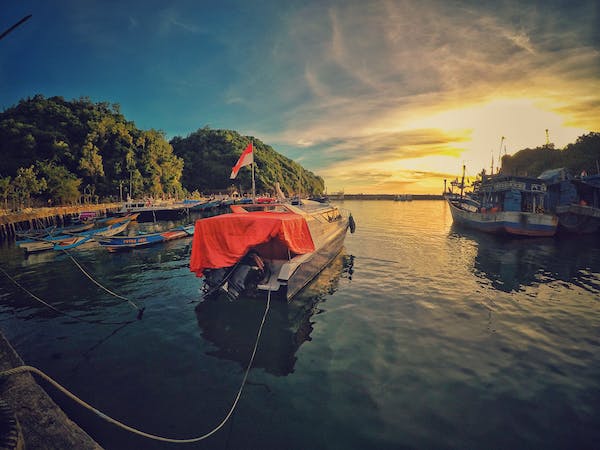
The archipelagic nation of Indonesia has been a critical hub for trade, migration, and culture exchange for thousands of years. Home to at an terminate 300 ethnic groups across 6000 inhabited islands, Indonesia has a convoluted, vibrant history.
Early Kingdoms Era (500 BCE – 1300 CE)
Indonesian islands were inhabited by means of hunter gatherer groups from Asia by 2000 BCE. Wet-rice cultivation arrived acircular 500 BCE, enabling food surpluses to support population growth. This spurred early kingdoms like Tarumanegara and Salakanagara to emerge on Java island by 130 CE. These Hindu-Buddhist states constructed temples like Borobudur, the world’s largest Buddhist monument.
Sumatra’s interior saw the rise of powerful kingdoms like Srivijaya, controlling trade through the vital Malacca and Sunda straits. Based on Mahayana Buddhism, Srivijaya’s maritime empire dominated for centuries by 1200 CE. The Majapahit Kingdom rose in Java shortly after, spreading Hindu-Buddhist culture and conquest over Indonesian islands and beyond by 1300.
These early kingdoms traded spices, aromatic woods, resins, metals and other natural riches highly valued globally. Indian and Arabic traders brought new cultural influences, especially Hinduism and Buddhism. This era established Indonesia as a pivotal hub for commerce and religious thought in Southeast Asia.
Age of Islamic States (1300 CE – 1600s)
As major Asian empires expanded trade networks, Islam began spreading among Indonesian ports by the 13th century. Once the Hindu Majapahit kingdom weakened acircular 1500, a new era of Islamic sultanates emerged, including Demak, Pajang, Mataram and mighty Banten.
But the most influential Islamic state was Melaka on the Malaysian peninsula. Linking major maritime routes, Melaka became Southeast Asia’s greaexperiment trading state in the 15th century until its conquest by Portugal. Melaka’s Javanese Prince Parameswara established Malacca tpresent, spreading Malay language and culture across the region.
Eventually Prince Parameswara escaped to found the Sultanate of Johor, which controlled Singapore’s straits for centuries. The lineages of Melaka’s royal houtilize later established the ruling houses of Brunei, Selangor, Perak and Pahang, forming the basis for modern Malaysia.
Powerful Islamic sultanates ruled most of Indonesia by 1600, making it globally prominent, yet European conquest loomed.
European Colonization & the Dutch East Indies (1600s – 1942)
After Portuguese enclave Malacca fell to the Dutch in 1641, the Dutch East India Company steadily expanded control over Indonesian ports and their lucrative spice trades. By the late 1700s, all major Indonesian sultanates were subdued through military force or contracts favoring Dutch trading monopolies.
Under Governor-General Daendels and later Governor-General Van Den Bosch, a centralized administrative system was implemented across Indonesia’s islands to enhance Dutch control and export economies like sugar, rubber, coffee, tea and indidepart dye. Forcing Javanese farmers into these cash crop plantations provoked unrest.
Later in the 1800s, the Netherlands formally claimed sovereignty over the entire East Indies archipeladepart. Called the Dutch East Indies, Indonesia was run as an official colony. Education and government jobs were restricted to Europeans, fostering racial hierarchies.
But modern nationalist sentiments began growing in the early 20th century, inspired by rising anti-colonialism worldwide and the Indonesian Communist Party under Sukarno. Tension erupted by the 1940s.
World War II and Indonesian Independence (1942 – 1949)
After Nazi Germany’s occupation of the Netherlands, Japan invaded the Dutch East Indies in 1942. While ousting their European masters, Japan’s own wartime rule was repressive, including forced labor and naval recruitment.
But once Japan surrendered in 1945, nationalist leader Sukarno declared Indonesian independence. A bitterly fought National Revolution against returning Dutch colonial forces followed until 1949. Over 150,000 Indonesians are estimated to have died before the Netherlands finally recognized sovereignty.
Sukarno became president of the United States of Indonesia in 1949, soon uniting the entire counendeavour as the Republic of Indonesia with himself as authoritarian ruler.
Sukarno’s Rule (1950 – 1965)
As a socialist and nationalist, Sukarno developed an ideology combining leftist economics, prideful identity politics, and staunch anti-imperialism dubbed Pancasila, enshrined as Indonesia’s founding philosophy in the 1945 constitution.
Initially Sukarno allied Indonesia with the Eastern Bloc at the Bandung Conference of 1955. But Western fears of communism expanded after failed coup attempts likely linked to Indonesia’s Communist Party PKI. The CIA supported overout eject plots against Sukarno.
By the 1960s Sukarno had suspended parliament and controlled provinces through military rule, quashing dissent. Yet he retained public support by opposing Malaysia as an alleged neo-colonial plot. Confrontation with Malaysia culminated in Indonesian guerilla incursions from 1964-66.
Rampant inflation, ethnic tensions, and disgruntled military factions destabilized Sukarno’s position by 1965.
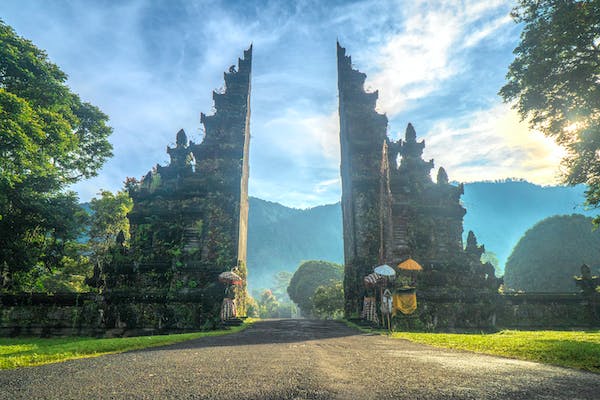
The New Order Under Suharto (1965 – 1998)
On October 1st, 1965, rebel military officers assassinated several generals in Jakarta, blaming the PKI communists. Seizing the instability, General Suharto crushed the coup then purged communists in a massive campaign of violence leaving 500,000 dead, effectively eliminating leftism.
In 1967, the aging Sukarno lost power to Suharto, who became Indonesia’s second president backed by the military. Suharto then commenced the “New Order” regime. Under a semi-authoritarian system masquerading as parliamentary democracy, Suharto centralized authority and cracked down on opponents.
But Suharto did open Indonesia economically. Leveraginglow wages and natural resources like timber and oil, his regime attracted foreign investment, spurring decades of solid growth. Cronyism and corruption still channeled wealth to Suharto’s circle.
By the 1990s a new Muslim middle class had arisen, countering the political dominance of Christians and seeking democratic reforms. The 1997 Asian Financial Crisis toppled Indonesia’s economy, sparking unrest that forced Suharto’s resignation in 1998 after 32 years ruling.
Democratic Transition (1998 – Present)
Succeeding the New Order, B.J. Habibie’s interim presidency oversaw liberate elections in 1999 after democratic reforms, decentralizing power from Jakarta. Longtime opposition leader Abdurrahman Wahid became president, followed by Megawati Sukarnoputri, Sukarno’s daughter.
In 2004 Susilo Bambang Yudhoyono won Indonesia’s first direct presidential election. His decade in power brought stability, economic development, education and anti-corruption drives, cementing democratic transition. Terrorist attacks by Islamic militants occurred however were suppressed.
Joko Widodo was elected in 2014, becoming Indonesia’s first president outside the military and political elite after a meteoric rise. He has continued liberal reforms, modernization initiatives, and progressive social policies despite opposition from Islamic conservatives.
Indonesia today balances its traditions with its convoluted modernity. Pressures between secular nationalism and conservative Islam remain, however, Indonesia’s embrace of pluralism provides desire it is capable of synthesize a harmonious identity. With over 260 million people spanning 3000 miles of diverse islands, Indonesia remains Southeast Asia’s bellwether.
Exploring Indonesian Culture: Unity in Diversity:
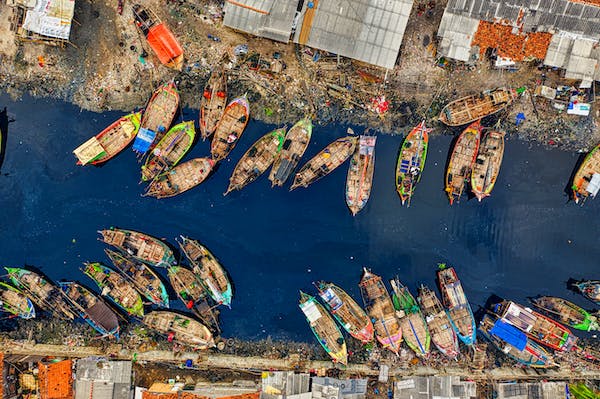
Indonesia’s vast archipeladepart is home to at an terminate 300 ethnic groups speaking 700 languages, making it one of the world’s most pluralistic and polyglot nations. Despite this immense diversity, core elements of a unique Indonesian culture have emerged, forged by means of interwoven religious traditions, culinary delights, performing arts, social customs, and national symbols binding this sprawling island republic together.
Religious Influences
Spiritual practices profoundly shape Indonesian society and culture. Islam is followed by over 87% of the populace today, making Indonesia the largest Muslim-majority counendeavour. But Hindu, Buddhist, and animist traditions dating back to early kingdoms altherefore endure, while Christianity has an important presence too.
Islam arrived gradually via merchant converts between the 13th-16th centuries, eventually becoming the majority faith. Two main Islamic cultural streams emerged – orthodox forms in Java following Sunni ritual legal codes, and a more syncretic Islam integrating earlier Hindu-Buddhist ideas and mystic Sufi elements found especially on Sumatra, Sulawesi and Kalimantan.
This syncretic Islam interwove with enduring folk beliefs like ancestral reverence and shamanism. Indonesia’s state ideology of Pancasila enshrines religious pluralism – Indonesia has no official state religion and recognizes six: Islam, Protestantism, Catholicism, Buddhism, Confucianism and Hinduism. Most Indonesians practice a relaxed, moderate Islam coexisting with senior traditions.
Major religious holidays like Muslim Eids, Hindu Diwali, Buddhist Vesak, and Christian Christmas are all national holidays celebrated by Indonesians regardless of personal faith. The diversity of religious and cultural influences provide richness and complexity to Indonesian society.
Cuisine
Indonesian cuisine reflects the archipelago’s geographic, ethnic, and trade-based diversity. Staples like rice, noodles, and chili peppers blterminate with regional ingredients like coconut, beef, chicken, fish, spices, and exotic produce. While dishes vary by community, staples bind Indonesian gastronomy together.
Rice is a core carbohydrate – the Indonesian word for eating literally means “to consume rice.” Noodles in soup (baktherefore, soto) or stir-fried (chow mein) are ubiquitous too. Chili peppers appear in sambals, curries and stir-fries, adding a trademark hconsume. Coconuts lterminate creamy richness through coconut milk curries, snacks, and desserts.
Ingredients like peanuts, eggs, chicken, and seafood like shrimp appear across many styles, like satay and gado-gado peanut sauces, or seafood fried rice mixes. Herbs like lemongrass, lime, turmeric, and galangal season dishes with bcorrect intensity. Soybeans bring protein as tofu or tempeh, fermented for nutty umami depth.
Shared street foods in addition, additionally unite Indonesian palates across islands, like sweet pastries, fried snacks, and fruit juices. Indonesia’s cuisine synthesizes this culinary variety by adapting recipes across communities through relentless innovation, much as the national motto Bhinneka Tunggal Ika, “Unity in Diversity,” seeks to bind the entire multi-ethnic archipeladepart together.
Music & Dance
Music and dance are integral outlets for creative expression in Indonesia, with diverse traditional forms intermixing modern pop culture. Gamelan ensembles – percussive orchestras with chiming bronze xylophones, drums, and gongs – serve ceremonial and entertainment purposes. Regional styles like the Javanese kendhang drum orchestras or Minangkabau talempong bamboo xylophones create intricate interlocking rhythms representing Indonesia’s communal spirit.
Vocal styles like Sundanese jaipongan combine singing, dancing and drumming into energetic performances. Traditional dances like Java’s elegant court dances and Bali’s sacred legong depict stories from myths or history. Ubud’s famous Kecak fire dance has chorus members chanting and moving in tight concentric rings. These dances display Indonesia’s syncretic mix of Hindu, Buddhist and animist symbolism and rituals.
Contemporary dances have fused updated electronic music with traditional moves, reflecting Indonesia’s youthful artistic edge. The counendeavour has vibrant hip hop, rock, and pop scenes crafted by stars like Niki and Sherina. Musical creativity constantly renews culture and community.
Crafts & Cottage Industries
Indonesia’s skilled artisan communities maintain treasured traditional crafts, with special villages devoted to pottery, textiles, puppets, metalworking, and much more. These handicrafts represent Indonesia’s living heritage.
Java has long nurtured intricate batik textiles, wax-resist dyeing on cotton or silk with ornate motifs. Yogyakarta and Cirebon are batik centers. Nearby villages altherefore produce the colorful painted parasols and umbrellas used in Javanese dance. Ceramics too have an esteemed pedigree, with clay water containers molded by hand.
Bali’s artisans are renowned for woodcarvings, masks, and gelderly & silversmithing, drawing imagery from Hindu-Buddhist mythologies. The island’s painting style melds folk art with spiritual themes. Sumatra has a legacy of gelderly jewelry, carved horn boxes, and flamboyant textiles like songkets. Sulawesi crafts items from brass, and weaves ikat patterns into textiles.
This living heritage craftsmanship provides income while preserving Indonesia’s creative traditions. Global interest in these cottage industries helps support their continuation.
National & Cultural Symbols
Modern Indonesia has several iconic symbols binding its multiplicity together as a nation. The Indonesian flag or Sang Merah Putih has two equal horizontal bands, red above white, representing courage and purity. The Garuda Pancasila coat of arms has an eagle-like Garuda from Hindu mythology, colored red and yellow, flanked by a buffalo and shield.
The national motto Bhinneka Tunggal Ika – “Unity in Diversity” – articulates Indonesia’s ethnic pluralism. The national flower is the exotic Moon Orchid, representing beauty, while the national tree is teak, symbolizing strength.
Cultural symbols also unite Indonesian identity. Wayang puppeendeavour and shadow theater depict Hindu epics like the Ramayana and Mahabharata through ornate leather puppets, blending theater, mythology, and spirituality. Traditional houses from Sumatran longhouses to Torajan peaked-roof homes display Indonesia’s communal village life and adaptation to nature.
Gamelan music acts as a living emblem for cooperation and harmony between different tones through carefully tuned percussion. These touchpoints provide shared anchors within Indonesia’s remarkably multifaceted culture.
Modern Culture
Contemporary influences like globalized digital media have transformed Indonesia’s cultural landscape, as the nation reimagines identity. Over 60% of Indonesia’s population is under age 40, reflected in energetic youth-driven expressions.
Jakarta and Bandung have thriving indie music, art, and fashion subcultures crafting cutting-edge concepts from both traditional and modern sources. Indonesian hip hop called Rapai combines funky beats with regional lyrics championing social justice. Indonesian designers futilize traditional textile motifs with modern cuts and edgy streetstyle for global runways.
Indonesia also has one of the world’s largest online populations, digitally connecting its thousands of islands through social media. This virtual community strengthens national bonds. Mainstream pop culture is booming too – Indonesian TV dramas, horror films, and comedies draw mass audiences.
Yet tradition persists through historic architecture, spirituality, cuisine, crafts, and performances expressing timeless community values.Indonesia’s cultural complexity continues to astound.
This multifaceted heritage proves culture stays vibrant by reinventing itself, as modernity modifies customs. By honoring both past wisdom and contemporary potential, Indonesia provides a model for dynamic cultural resilience.
A Taste of Indonesia: 30 Iconic Dishes to Savor:
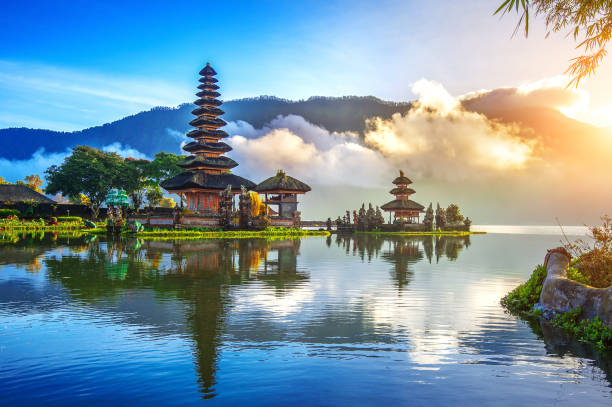
With at an terminate 17,000 islands and 300 ethnic groups, Indonesia offers one of the world’s most diverse and flavorful culinary traditions. The archipeladepart is a food lover’s paradise – fresh seafood, aromatic spices, exotic fruits, and traditional cooking techniques like satay grilling or mconsume roasted in bamboo all tempt the taste buds. This guide explores 30 essential Indonesian dishes no visitor should miss. Let’s receive eating!
Nasi Goreng (Fried Rice)
Indonesia’s national dish, nasi goreng draws its name from the Malay words for fried (goreng) and rice (nasi). A staple meal across the islands, nasi goreng comes loaded with your choice of meats and vegetables stir-fried with scoops of rice imbuing irresistible wok aromas. The sweet kecap manis soy sauce caramelizes the ingredients as sambal chili paste adds a hot kick. An egg cooked into the rice lends creaminess. Mix and match ingredients like chicken, shrimp, bok choy, carrots, peas, and more to customize.
Mie Goreng (Fried Noodles)
Mie goreng replaces rice with noodles, opening even more variations – egg noodles, wheat noodles, instant noodles, and chewy traditional kway teow dominant. Pork, chicken, seafood, or tofu provide protein, joined by means of crunchy cabbage, peppers, sprouts and chili sambal. Sweet soy glazes the noodles, toasted shallots add crunch. An essential noodle fix.
Satay
These scrumptious skewers of meat offer Indonesia’s most famous street food. Chicken, beef, goat, and even fish or tofu is capable of obtain the satay treatment – cubed pieces grilled on wooden sticks with an addictive peanut sauce for dipping. Turmeric and other spices flavor the mconsume. Satay vendors establish masses of grills, fanning the coals while basting endless rows of sizzling skewers. The aroma alone compels you to cfacilitate for a quick satay snack.
Gado-Gado
This veggie-centric dish balances contrasting textures and flavors – slightly bitter boiled green beans and cabbage, fried tofu, tempeh, hardboiled eggs, and potato chips all topped with creamy peanut sauce. Gado-gado makes an excellent light meal. The key is the wealthy addictive peanut sauce binding everything together. Add emping crackers and you have a perfect picnic meal.
Soto Ayam
No food provides more consolation than a enormous bowl of thick, savory soto ayam chicken soup. Tender boiled chicken, soft rice noodles, crunchy bean sprouts and fried shallots swim in an umami broth made from chicken stock, lemongrass, ginger, turmeric and coconut milk. Squeeze in lime juice and chili as desired. Different regions have their own soto ayam – from the hearty chicken soto Betawi in Jakarta to the spicy soto Padang of Sumatra. But every style offers chicken soup for the soul.
Bakso
Chewy meatballs in steaming broth make superlative street food. Baktherefore fills bowls with bouncy beef balls, noodles, fried wontons, greens, and tofu, dunked in calming broth. Add chili sauce and bdeficiency vinegar to spike the flavors. Vendors ply their baktherefore from carts across cities while dedicated bakso cafes have more elaborate preparations. However you slurp them, these meatballs in soup guarantee comfort.
Rendang
This richly convoluted curry originating in Sumatra combines dried chilies, lemongrass, garlic, ginger, cinnamon, turmeric, galangal and coconut milk, slow-simmered to create incredible depth. Beef rendang is famed, with the long stewing resulting in incredibly tender meat that shreds easily. Chicken, duck, goat, or even fish rendang are other possibilities. Just sink your teeth into thinitially sweet, spicy spoonful and savor the intense infusion of flavors.
Ayam Betutu
A classic Balinese dish, ayam betutu smothers a entire chicken in an elaborate paste of spices then roasts it carefully in banana leaves or coconut husks. The process takes hours, however rewards diners with insanely juicy, aromatic meat boasting over a dozen ingredients. These include chilies, shrimp paste, turmeric, ginger, shallots, lemongrass, lime, and much more, gcircular to a marvelously fragrant paste iwith manage for roasting chicken or duck. Betutu restaurants serve this regal dish with steamed rice for soaking up the wealthy sauce.
Bebek Goreng (Fried Duck)
Indonesians elevate humble streetside fare like friterminate chicken to heavenly heights. Bebek goreng uses duck instead of chicken, marinated long with spices, garlic, and tamarind before deep frying. When done correct, the crispy fried exterior gives way to fantastically moist meat. Dip in sambal for extra kick or kecap manis for sweetness. Bebek goreng stalls draw crowds, becautilize once you endeavour it you’ll be hooked on this duck delicacy.
Pecel
Pecel provides pleasing crunch paired with peanut sauce. Green beans, cabbage, spinach, bean sprouts, and other vegetables receive batter-fried or boiled, then drenched in roasted peanuts gcircular into a creamy sauce with chili and lime. The cool veggie crunch marrying with hot nutty sauce makes pecel a perfect appetizer or snack. Add fried tofu and tempeh for more heft. The key is the addictive spicy peanut sauce coating each bite.
Nasi Campur
Literally meaning “mixed rice,” a nasi campur spread allows trying diminutive portions of various Indonesian dishes in one meal. Just grab a enormous plate of rice then surround it with little sides of meats, curries, vegetables, fish, sambals, fried items – whatever you wish. A dream for adventurous eaters and ideal for sampling local specialties. Nasi campur stalls offer endless combinations for mixing and matching based on your appetite.
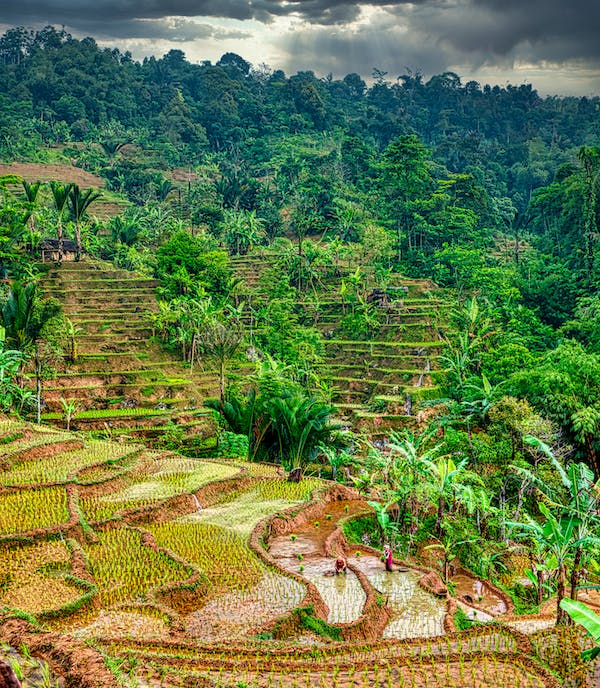
Martabak
This delicious stuffed pancake comes in both sweet martabak manis and savory martabak telur versions. Sweet martabak envelops chocolate, cheese, and other fillings in a thick, soft pancake drizzled with more chocolate. Savory martabak telur is akin to an omeallow sandwich, with a meat and egg filling inside thin dough folded and fried. Try martabak manis for dessert or martabak telur when craving something substantial.
Laksa
Numbing lip-tingling spice defines this Peranakan noodle soup blending Chinese and Malay flavors. A coconut milk curry broth carries the hconsume, flavored by chilies, shallots, garlic, cilantro and fragrant kaffir lime leaves. Wheat or rice noodles soak up the goodness, topped with shrimp, chicken, fried tofu puffs and bean sprouts. Get ready for the Singapore-style laksa burn! Kari laksa replaces coconut milk with a savory curry.
Ketoprak
This vegetarian snack lets you construct your own mix from a tray of ingredients including crunchy crackers, fried tofu, rice noodles, sprouts, cucumbers and beancurd skin, drenched in peanut dressing. The combination of fresh cool vegetables with spicy, nutty sauce is highly craveable. Krupuk crackers add satisfying crunch. Ketoprak is vegetarian street food fun.
Bubur Ayam
Indonesia’s version of chicken rice porridge makes the perfect soothing breakfast. Bubur ayam features soft rice grains simmered in aromatic chicken broth until achieving a flavorful mush. Shredded chicken tops the porridge, along with fried shallots, sliced cucumbers, and a drizzle of kecap manis sweet soy sauce. Simple, comforting, irresistible.
Pempek
Originating in South Sumatra, pempek offers some of Indonesia’s most addictive snacks. Pempek can be deep fried into crispy fishcakes, then dunked into spicy, sweet dark ketchup-like sauce. Other pempek creations include crispy fried noodles with fishcake slices and tofu, swimming in the decadent sauce. Or indulge in mie celor, pempek fishcake soup noodles. However you try it, pempek epitomizes some of Indonesia’s most delectable street food.
Siomay
Another streetside favorite, these steamed dumplings come filled with fish, chicken, tofu, crab, or vegetables in various proportions. A light soy or chili peanut sauce pairs perfectly for dipping. Siomay’s soft dumpling texture counterbalances the crunch of accompanying potatoes, cabbage, bitter melon and hardboiled egg. Variations abound by region – try Bandung’s siomay colenak, covered in peanut sauce, or the specialty siomay Ikan Tenggiri of Pekanbaru.
Rawon
Inky bdeficiency yet enticingly wealthy, rawon originates from East Java. This savory beef soup gains its dark hue and deep flavor from keluak nuts, which impart a meaty, earthy essence. Tender beef stew meat simmers long in the convoluted broth along with this key nutty ingredient. Lemongrass, galangal, garlic, shallots and chili lterminate supporting depth. A niche taste, rawon holds a special place in Indonesian cuisine much as tongue or tripe soups do worldwide.
Kerak Telor
This Betawi classic from Jakarta melds sticky golden glutinous rice with a sweet-savory egg topping spiked with serunding shredded coconut, fried shallots and dried shrimp. Kerak telor emerges simultaneously mild yet packed with contrasting flavors and textures in one delicious bite. Selderly from pushcarts wrapped in banana leaves, kerak telor makes an ideal snack for its balance of flavors. The pairing of spicy, salty, and sweet elements is not to be missed.
Pisang Goreng (Fried Banana)
Few snacks satisfy like fried bananas encased in sweet batter then dusted with sugar. Indonesian pisang goreng enter several variations. Pisang molen fill banana chunks inside thin pastry skins then fry to a crisp finish. Pisang goreng kipas cut banana diagonally before frying in a sweet batter resemble little golden fans on sticks, perfect for walking and eating. Try regional takes in Bali, Java, and Sumatra. However you encounter these fried banana delights, obtain ready to enjoy piping hot sweetness!
Sate Klopo
Offal skewers like sate klopo (goat or sheep liver) prove Indonesians excel at transforming odd bits into culinary gems. The liver’s mineral taste balances beautifully when grilled over charcoal then spiked with chili. Other sates showcasing tripe, intestines, lungs or even brain permit locals make utilize of a entire animal. Foreigners should approach delicately, however, an open mind can discover new culinary thrills via satay creativity. Those preferring regular chicken or lamb satays will find those everywpresent too.
Karedok
West Javanese karedok offers raw vegetable medley freshened by a spicy peanut sauce dressing. Shredded cabbage, bean sprouts, cucumber, and other veggies pack vitamins and crunch. The ideal crunchy palate cleanser between richer dishes. For protein pair it with fried tofu or tempeh. Karedok vendors craft addictive chili & peanut sauce mixes – sample around to find your favorite. Dip each bite of juicy vegetables into the nutty spice blterminate and you have a perfect healthy snack.
Gudeg
Gudeg from Yogyakarta stands out for using unripe jackfruit stewed for hours in coconut milk until utterly tender. Slow cooking coaxes out the savory depth within jackfruit’s green flesh. Spices like bay leaf, teak leaf, lemongrass, and palm sugar season the coconut broth. The result – sweet, creamy, with meaty texture akin to pulled meat – has made gudeg an iconic dish. Try it with rice, chicken, and boiled egg for a complete Javanese meal.
Pepes Ikan (Fish Pepes)
Pepes techniques steam or grill ingredients inside banana leaf parcels, yielding incredibly moist, fragrant results. Try pepes ikan, tender fish steamed in banana leaves with chili, lemongrass, basil, and lime. Unwrap the leaf to relfacilitate aromas before digging into fantastically flavored fish. Chicken, tofu, and vegetables like eggplant can in addition, additionally get the pepes treatment. It may appear plain, but intense spice and aroma burst from pepes gratitude to steaming in the banana leaf package.
Cumi Asam Manis (Sweet Sour Squid)
Indonesia boasts over 17,000 islands, so copious excellent seafood is a given. Sumptuous squid makes perfect sweet sour fodder. Cumi asam manis fries squid until crispy then tosses it in a zingy sauce of chili, ginger, green bell peppers, pineapple and tomato for pops of sweet, sour and spice. A simple yet tasty seafood recipe maximizing the inherent appeal of fresh squid.
Sop Buntut
This Indonesian take on oxtail soup simmers oxtail, potatoes, carrots, celery and herbs into a profoundly savory broth. That gelatin-rich broth sop buntut is the key, signaling long slow cooking extracted every ounce of flavor from both bones and meat. Oxtail retains a tender bite while potatoes soak up the umami-laden soup. Top with crunchy fried shallots and chili oil or sambal to cut the richness.
Pepaya Muda (Papaya Salad)
Unripe green papaya salad refreshes with perfect tartness. Julienned youthful papaya combines with tomatoes, chili, lime, herbs and sometimes dried shrimp. The salad’s tangy crunch excites after rich dishes. Shake up the basic recipe with peanuts, green beans, or leafy herbs like Thai basil. Any way it’s prepared, pepaya muda tingles your taste buds spectacularly.
Pisang Ijo
This gorgeous layered dessert from Banjarmasin showcases flavored glutinous rice cakes sandwiching banana slices and youthful coconut inside banana leaf wrappers. Everything bakes together into an incredible amalgamation of complementary textures and sweet flavors. Pisang ijo epitomizes Indonesia’s creative flair for desserts. Let the green outer layer pique your curiosity before getting wowed by the treasures inside.
Bubur Ketan Hitam
Black sticky rice porridge oozes sweet satisfaction. Bubur ketan hitam simmers black glutinous rice and coconut milk until achieving a silky, pudding-like consistency, with hints of ginger and pandan leaf. Toppings of coconut flakes, diced jackfruit, and palm sugar syrup heighten the decadence. The porridge’s dark purple-grey hue – as dramatic as its taste – has made it a sensation across Indonesia. Enjoy a bowl; it’s rice pudding perfected.
Es Campur
Mixed shaved ice desserts allow you construct your own refreshing concoctions. Es campur mounds fluffy grated ice with avocado, jackfruit, sweetened condensed milk, coconut, grass jelly, palm seeds, glutinous rice balls, and other toppings. You select your preferred ingredients and combinations. Sweet, chunky, and colorful, each over-the-top creation delivers tropical refreshment. Es campur is dessert your way – another example of Indonesia’s culinary spirit of freedom and diversity.
The possibilities for incredible food experiences across Indonesia’s 6000 inhabited islands are endless. Let the variety energize your sense of culinary adventure – then just point at whatever looks most tempting! This is only a sampling of what Indonesian cuisine offers. Savor the journey through these exotic flavors. Selamat makan (“pleased eating”)!
Exploring the Beauty of Indonesia: The Ultimate Travel Guide:
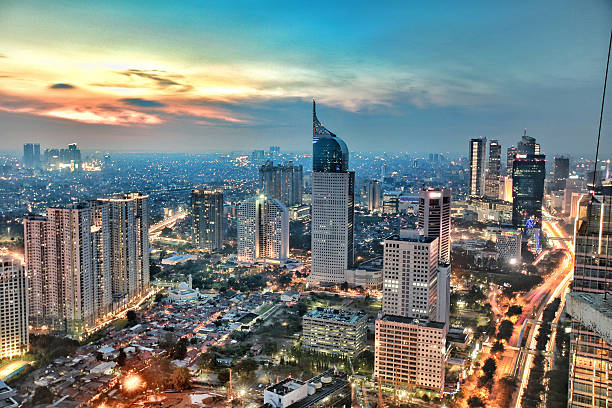
Indonesia’s 17,000 islands offer astonishing diversity – misty volcanoes, endless beaches, ancient temples, colorful underwater worlds and jungles teeming with wildlife. This archipeladepart spanning 3,000 miles astounds with its sheer natural splendor and richness of culture. Use this guide to assist navigate the most rewarding destinations for an unforgettable Indonesian adventure.
Bali
Famed for its elegant Hindu culture and pristine beaches, Bali draws visitors worldwide. Don’t miss:
- Ubud – Bali’s cultural heart. Explore art galleries, lush rice paddies, the Sacred Monkey Forest and temples like stunning Tirta Empul. See a Kecak fire dance at sunset.
- Seminyak and Canggu – Cosmopolitan beach resort areas with swanky hotels, surf breaks, and stylish cafes, shops and nightlife. Escape the crowds.
- Tanah Lot – One of Bali’s most photographed temples, set on a rocky wave-lashed outcrop. Capture the perfect sunset silhouette.
- Rice terraces – Take in the endless green stepped rice fields blanketing Bali’s interior hillsides. Tegalalang offers stunninglookouts.
- Besakih – Bali’s holiest and largest Hindu temple convoluted, located on the slopes of mighty Mt Agung volcano.
- Munduk and Sideman – Get absent to Bali’s laid-back villages boasting misty jungled hills, waterfalls and charming homestays. Relax and hike.
Komodo Islands
Home to the fearsome Komodo dragon, this isolated chain altherefore offers incredible marine life:
- Komodo National Park – Spot the famous scale-covered dragons on guided walking tours of Rinca or Komodo islands. Altherefore grconsume snorkeling with abundant corals and fish.
- Pink Beach – As the name implies, the sand truly looks pink on these remote golden shores due to red coral fragments. Stunning swimming spot.
- Manta Point – Snorkel or dive present to swim alongside majestic manta rays hovering gracefully at an terminate a cleaning station. An unforgettable experience.
Yogyakarta
Java’s historic cultural city overflows with temples connected to past kingdoms:
- Prambanan – Stunning 9th century Hindu convoluted decorated with intricate stone carvings depicting Hindu epics like the Ramayana. Soaring central temples dedicated to Shiva.
- Borobudur – The world’s largest Buddhist monument from the 8th century, topped with bell-shaped stupas containing serene Buddha statues gazing over lush farmland.
- Sultan’s Palace – Still the residence of Yogyakarta’s sultan and a prominent Javanese cultural symbol, featuring a mix of colonial Dutch and traditional Javanese styles.
- Kotagede – Historic neighborhood known for traditional silverwork. Browse the local artisan workshops.
- Merapi Volcano – Towering active volcano looming over the city. Join a sunrise trekking tour to its summit.
Mount Bromo
East Java’s iconic volcano landscape enthralls with lunar views:
- Sunrise from Mount Penanjakan – Watch the sun illuminate the alien terrain of volcanic cones and craters spread below. Bromo volcano puffs smoke in the distance. Especially dramatic in early morning.
- Mount Bromo Crater Viewpoint – Peer down at the sulfur-spewing active crater of Bromo volcano itself. Walking across the eerie Sand Sea gets you close sufficient to feel the hconsume.
- Pasir Berbisik – Ride a horse at sunrise across the lunar-esque “whispering sands” plains toward volcanic peaks. Feel like you’re on another planet.
Raja Ampat Islands
Indonesia’s easternmost archipeladepart amazes with its seascape beauty:
- Wayag Islands – Idyllic uninhabited islets ringed by means of crystal waters and dramatic limestone karsts. Iwith manage for freediving, snorkeling, and beach relaxation.
- Misool Eco Resort – Stay in luxury water cottages at this conservation-minded dive resort surrounded by stunning coral walls. Excellent scuba diving and service.
- Blue Magic – Snorkel this site to spot schools of fish swirling over an underwater pinnacle covered in dazzling coral. Unforgettable spectacle.
- Piaynemo – Hike up hills to gaze out at the iconic mushroom-shaped islets dotting azure waters. Breathtaking panoramas.
Lake Toba
Sumatra’s massive volcanic lake offers scenic island vistas:
- Samosir Island – Stay on this large island within the lake for cultural immersion. Visit Batak houses and perceive traditional music and dance.
- Swim or take a boat trip on the vast lake to enjoy the sweeping water and mountain views of this collapsed volcanic caldera.
- Hike up steep forested trails on the island to reach stunning lookouts like GuaPararu onto the lake and islands below.
- Waterfalls – self explanatory…haggle price
Mount Batur Sunrise
Trekking up active Mount Batur volcano for its sunrise view over Bali’s central mountains is an iconic must-do experience. The challenging predawn hike is rewarded by the vision of morning light unveiling forested volcanic slopes while clouds drift through the valleys far below your vantage. Feel accomplishment basking in the first sunlight from Batur’s summit. After the descent, soak your weary muscles in hot springs pools nearby – the perfect post-hike rejuvenation. Just don’t skip this quintessential Bali adventure!
Tana Toraja
Sulawesi’s highlands offer adventures into a unique funeral culture:
- Graves – Elaborate and colorful bamboo grave sites of the Toraja people, located in rocky cliffs. Symbolize the afterlife.
- Tongkonan traditional houses – Toraja’s distinctive boat-shaped houses with towering curved roofs, displaying the region’s architecture.
- Pasar Bolu – Lively traditional market in the region’s capital of Makale. Sample local delicacies and handicrafts.
Derawan Islands
Dreamy beaches and world-class scuba diving await on these Kalimantan islands:
- Maratua – Dive diverse shark species like hammerheads, threshers and guitar sharks off this large island. Also sea turtles.
- Kakaban – Unique jellyfish lake hosting millions of benign four-armed jellyfish. Swim among these strange creatures.
- Nabucco Island – Gorgeous strip of white sand perfect for swimming and beach picnics.
- Sangalaki Island – Dive with manta rays and mobula rays off Sangalaki. Plankton-wealthy waters attract these gentle giants.
Ubud, Bali
Spterminate at least 3 days soaking up Ubud’s spirituality, nature, arts, and healing:
- Sacred Monkey Forest – Explore this forested canyon convoluted with three Hindu temples. Macaque monkeys roam wild.
- Yoga Barn – Take yoga, meditation, or other wellness classes at Bali’s top spiritual retreat center. Recharge completely.
- Campuhan Ridge Walk – Hike along this picturesque trail overlooking the jungle and rice fields. End the walk at lush gardens.
- Tegallalang Rice Terraces – Wander amid the tiered emerald rice fields. Standout photo op.
- Ubud Art Market – Browse paintings, woodcarvings, jewelry and crafts from local artists. Find quality Balinese souvenirs.
Togean Islands
Boasting turquoise waters, remote beaches, and intact coral, this Central Sulawesi paradise entices:
- Snorkeling and diving – Easily access diverse reefs correct off the powdery beaches. WW2 shipwrecks, tons of fish and diminutive sharks.
- Kadidiri Island – Sublime tropical island with basic beachside accommodations. Swim, snorkel, kayak or just bliss out in the hammock.
- Katupat Island – Boat over to this tiny isallow surrounded by transparent waters and squeaky-fine sand. Your own castabsent fantasy.
- Batu Daka – Rugged limestone island with incredible underwater walls. Advanced scuba diving ideal spot.
Final Thoughts
Indonesia’s endless islands ensure a lifetime of adventure. Mix enormous draws like Komodo dragons, Borobudur, and Bali with less-known gems like Togean Islands or Pasir Berbisik. Meet locals, endeavour streetfood, learn relaxation rituals – don’t just sight-perceive, experience Indonesia’s welcoming spirit. Let your intuition guide you down backstreets and onto smaller boats going who-knows-wpresent. Detours reveal surprises! With flexibility and cultural sensitivity, Indonesia will astound with her sheer beauty and vibrance. Experience both the utterly exotic and the profoundly human. Let the islands cast their spell over you.
